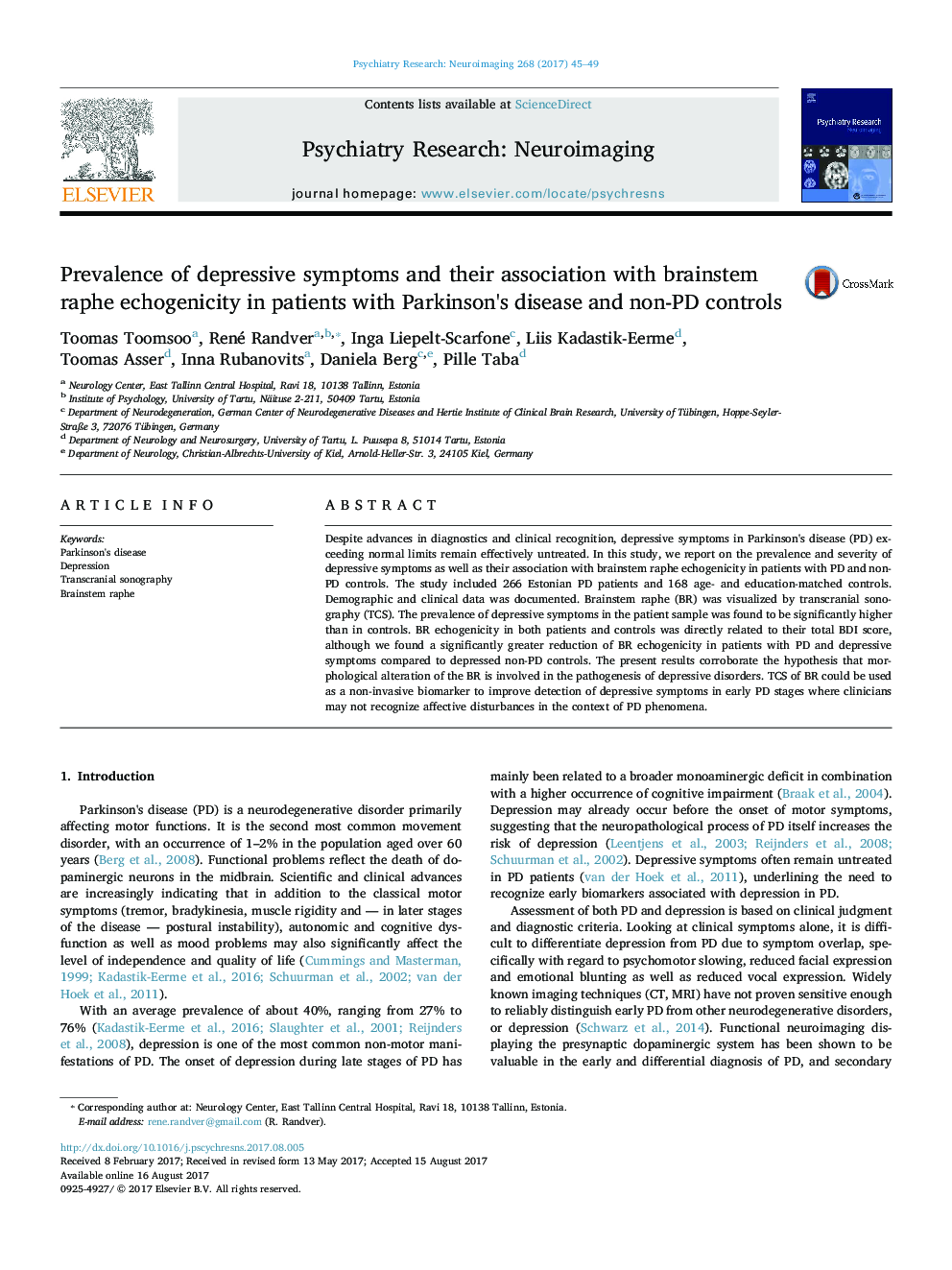| Article ID | Journal | Published Year | Pages | File Type |
|---|---|---|---|---|
| 4933889 | Psychiatry Research: Neuroimaging | 2017 | 5 Pages |
â¢Prevalence of depressive symptoms in PD was significantly higher than in controls.â¢BR echogenicity in patients and controls was directly related to their BDI score.â¢Morphological alteration of the BR is involved in PD-associated depressive disorders.
Despite advances in diagnostics and clinical recognition, depressive symptoms in Parkinson's disease (PD) exceeding normal limits remain effectively untreated. In this study, we report on the prevalence and severity of depressive symptoms as well as their association with brainstem raphe echogenicity in patients with PD and non-PD controls. The study included 266 Estonian PD patients and 168 age- and education-matched controls. Demographic and clinical data was documented. Brainstem raphe (BR) was visualized by transcranial sonography (TCS). The prevalence of depressive symptoms in the patient sample was found to be significantly higher than in controls. BR echogenicity in both patients and controls was directly related to their total BDI score, although we found a significantly greater reduction of BR echogenicity in patients with PD and depressive symptoms compared to depressed non-PD controls. The present results corroborate the hypothesis that morphological alteration of the BR is involved in the pathogenesis of depressive disorders. TCS of BR could be used as a non-invasive biomarker to improve detection of depressive symptoms in early PD stages where clinicians may not recognize affective disturbances in the context of PD phenomena.
